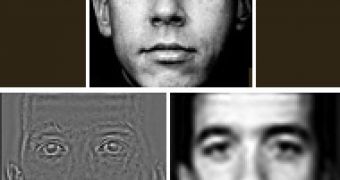The desire to look good is a normal and positive behavior, in most cases. But there are also situations in which it can develop into a disease, called Body Dysmorphic Disorder.
The fixation with having even the smallest physical defect can cause severe discomfort, can lead to social and work impairment, as well as hinder many other activities. BDD affects about 1-2% of the overall population and 10-15% of the recorded psychiatric patients, but this percentage is increasing as we speak. Generally, the disorder begins in adolescence.
The obsessive preoccupation with one's physical appearance makes BDD patients look persistently into the mirror and, in many cases, it induces social isolation, and even suicidal behavior. Of course, many of these patients appeal to plastic surgery, but the majority consider the operation has been not effective.
BDD patients can have what we call regular, normal looks, but they are constantly obsessed with traits like their skin, their noses, and their hair - all of which, in their own eyes, never look right.
Now, for the first time, a brain-imaging research published in "Archives of General Psychiatry" has revealed the brain bases of BDD, showing that this is not an emotional issue but rather that the brains of BDD patients are perceiving skewed images of all persons.
The team led by psychiatrist James Feusner at the University of California, Los Angeles, put BDD patients and control subjects to focus on image faces while being brain scanned by fMRI.
Each face had 3 variants: a real photograph; a low-spatial-frequency information (a blurred image coming with a general impression of the face) and a high-frequency information (stressing the facial lines).
High- and low-frequency information are processed by distinct neural pathways. A blurry image is analyzed by the brain as a whole, while in the case of high-frequency information, it focuses on details.
The brains of control volunteers considered the real face and the low-frequency one as a whole (employing the right brain hemisphere), and focused on details just for the high-frequency face. But BDD patients looked at all three types of images by focusing on details, not as a whole, employing the left hemisphere of the brain.
"People with BDD don't have defective vision, as shown by the fact that there were no differences between the two groups in the activity of the occipital lobe, the brain's primary visual area. The differences show up in their "extended visual processing network," indicating that perceptions get twisted beneath the level of emotion or conscious thought," said Feusner.
"As a rule, psychiatrists have assumed that the distorted perceptions of people with BDD only related to how they view themselves. This study indicates that these distortions go deeper to include perceptions of others. That helps explain why the disorder seems so "ingrained"," said Sanjaya Saxena, a psychiatrist at the University of California, San Diego.
"In addition to measures to reduce anxiety and depression, people with BDD might benefit from behavioral therapy aimed at "retraining" their visual processing."

 14 DAY TRIAL //
14 DAY TRIAL //